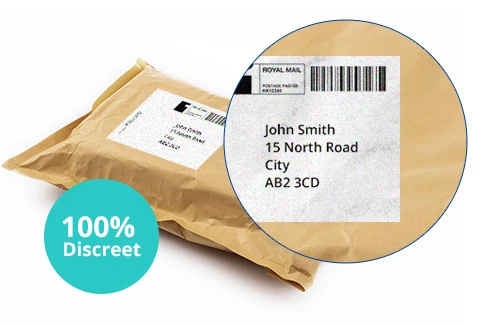Over 40% of adults in Britain suffer with at least one allergy¹. Most are just an everyday nuisance, but others are more serious and some can even cost people their lives. The most effective way to treat an allergy is by avoiding the trigger, but to do that you need to know what’s causing your symptoms. So, how do you diagnose an allergy?
What is an allergy?
An allergy is your body’s response to something it perceives as a threat. There are three different types of allergies:
- Ingested – certain foods you eat, such as peanuts or seafood
- Inhaled – airborne particles that are breathed in, such as pollen
- Contact – things that come into contact with your skin, like poison ivy
The symptoms of an allergy are different for each type of allergen. A food allergy, for example, can cause sickness or stomach ache, whereas hay fever typically leaves sufferers with the symptoms of a cold – red, itchy eyes, sneezing, and a runny nose.
Before you can start to treat an allergy, you need to know what’s causing it, and that’s where allergy testing comes in.
Allergy testing in a clinic
Most GP surgeries are equipped to diagnose and treat a mild to moderate allergy where there is an obvious cause. If it’s not clear what’s behind your allergy or the symptoms are severe, then they may refer you to a specialist allergy clinic to investigate further.
There are five different allergy tests that your clinician might choose to use depending on your symptoms and what they think might be causing it.
Skin prick test
Also known as a scratch test, this is the most common type of test used to diagnose allergies. It involves testing your reaction to a small amount of the allergen that you suspect is causing your symptoms.
A drop of liquid containing the allergen is placed on your forearm, then the skin under it is gently pricked. If you are allergic to the substance, within 15 minutes an itchy, red bump will appear in the same spot.
Blood tests
A blood test is sometimes used instead of a skin prick test or alongside it. It involves analysing a sample of your blood to look for antibodies that are produced when your immune system responds to something it thinks is a threat.
The blood sample is sent away to a special lab for analysis, and you will have to wait for the test results to come back.
Patch tests
A patch test is used to investigate a skin allergy like contact dermatitis (a form of eczema). The suspected allergen is added to a special disc, which is taped to your skin and monitored for around 48 hours to check for a reaction.
Elimination diet
An elimination diet is one of the tests used to investigate food allergies. It involves avoiding the food you think is causing your symptoms for two to four weeks. If your symptoms improve, then you will be asked to slowly add it back in again. This is the best way of determining whether you are allergic to a type of food.
Challenge testing
In some cases, your allergist might suggest a food challenge test. This can only be done under close supervision in a clinic, as it involves giving you tiny amounts of the food you think you are allergic to and then monitoring your reaction.
Over time your clinician will gradually increase the amount they give you. Though this sounds like a risk, allergy clinics are well-equipped to treat severe allergic reactions. You should only ever attempt to do this in a clinic with trained staff.
It’s important to remember that a food allergy is different from a food intolerance. An allergy causes a response from your immune system that affects your whole body, whereas an intolerance is less severe and usually only causes digestive problems.

Home allergy test kit
If you think you have the symptoms of an allergy but you aren’t sure, and you’d like to know more before seeing your GP, then you might benefit from a home testing kit.
Home allergy test kits look for Immunoglobulin E (IgE) in your blood, which is an antibody that your body produces when it responds to an allergen. Using just a pin prick of blood from your finger, the test kit can give you a result within 10 minutes.
If you have high levels of IgE antibodies in your blood, then it’s likely that you have an allergy. A home test kit cannot identify specific allergens; for that you will need to see your GP. If your test result is negative but your symptoms continue, you should see your doctor, who can order further tests or refer you to a specialist.
Home allergy test kits are not suitable for children under 6. If you think your child has an allergy, make an appointment to see your GP.
When to seek immediate help
Some allergies can cause a severe reaction known as anaphylaxis. This usually occurs within minutes of being exposed to the allergen. If you experience any of the following symptoms, you should seek urgent medical help:
- Swelling of the throat, tongue, and lips
- Trouble breathing or talking
- Wheezing
- Light headedness
- Confusion
- Blue lips or skin
- Collapsing or losing consciousness
Patients who have been diagnosed with a severe allergy are usually given an injector pen filled with adrenaline to use at the first sign of a reaction. Early intervention is critical in treating anaphylactic shock, which is why being prepared is so important.
The key takeaway
Allergies present themselves in different ways, and what’s true for one person might not be for another. The most effective way to treat an allergy is to avoid whatever it is that’s triggering it. Uncovering the cause of your symptoms is crucial – that might start at home with a self-test kit, then progress to being seen by a specialist in an allergy clinic.
There are lots of tests available, and your specialist will choose one based on your medical history, allergy symptoms, and whatever they suspect is causing it. Diagnosing allergies is perfectly possible, and once you know what’s behind your symptoms, you can start to discuss treatment options with your doctor or specialist.





